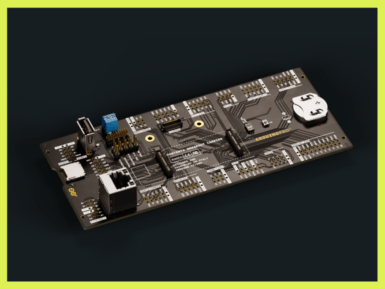
Overview
DFRobot Gravity: analog electrical conductivity meter V2 is specially used to measure the electrical conductivity of an aqueous solution, and then to evaluate the water quality, which is often used in water culture, aquaculture, environmental water detection, and other fields. You may also check Liquid Sensor Selection Guide to get better familiar with our liquid sensor series.
This ec meter product, as an upgraded version of the electrical conductivity meter V1, greatly improves the user experience and data precision. It supports 3~5v wide voltage input, and is compatible with 5V and 3.3V main control board; The output signal filtered by hardware has low jitters; The excitation source adopts AC signal, which effectively reduces the polarization effect, improves the precision, and prolongs the life of the probe; The software library uses two-point calibration method, and can automatically identify standard buffer solution, so simple and convenient.
With this product, the main control board (such as Arduino), and the software library, you can quickly build an electrical conductivity meter, plug, and play, no welding. DFRobot provides a variety of water quality sensor products, uniform size, and interface, not only meet the needs of various water quality testing but also suitable for the DIY of multi-parameter water quality tester.
Conductivity is the reciprocal of the resistance, which is related to the ability of the material to carry the current. In the liquid, the reciprocal of the resistance, the conductivity, is the measure of its ability to conduct electricity. Conductivity is an important parameter of water quality. It can reflect the extent of electrolytes present in water.
Tips:
In order to ensure measurement accuracy, it is strongly recommended to add a temperature sensor to measure the temperature and achieve automatic temperature compensation.
Features:
- 3.0~5.0V wide voltage input
- Hardware filtered output signal, low jitter
- AC excitation source, effectively reduce polarization
- Gravity connector and BNC connector, plug and play, no welding
- Software library supports two-point calibration and automatically identifies standard buffer solution, integrates temperature compensation algorithm
- Uniform size and connector, convenient for the design of mechanical structures
Applications:
- Water quality monitoring.
- Aquaculture.
- Hydroponic & Aquaponic
Get Inspired

We are pleased to announce the launch of the new Arduino Portenta Breakout, designed for developing hardware projects, testing, and debugging on Portenta family boards.The Portenta Breakout exploits all the capabilities of the input and outputs, making all high density connectors’ signals individually accessible. The Portenta Breakout reduces development time for industrial grade solution automation based on the Portenta line. Designed to help the hardware engineers and makers who want to develop a proprietary device for Portenta family boards or interfacing external devices to the Portenta family boards (e.g. the Portenta H7). It is now quick and easy to connect and test external hardware components and devices in the lab using all the high density connectors’ signals of the Portenta individually. Rapid development for machine vision Connectivity to the OpenMV Global Shutter Camera Module is provided on the Portenta Breakout, allowing for rapid development of machine vision applications alongside the Portenta family. Test external hardware and devices The Portenta Breakout enables easy debugging through the JTAG connector and allows for inspection of the bus lines through the breakout pins. In addition to the breakout pins, the Portenta Breakout features Ethernet, USB and SD sockets, a coin cell, a power button, an external power supply, an OpenMV camera socket, and configurable boot selection modes. Features include: Power ON buttonBoot mode DIP switchConnectorsUSBARJ45 GBit EthernetMicroSD cardOpenMV shutter moduleMIPI 20T JTAG with trace capabilityPowerCR2032 RTC lithium battery backupExternal power terminal blockI/OBreak out all Portenta high density connector signals Male/female HD connectors for interposing breakout between Portenta and shield to debug signals Beyond use in the development lab, the Portenta Breakout can act as a first point of entry for educating technicians in industrial grade control and embedded








